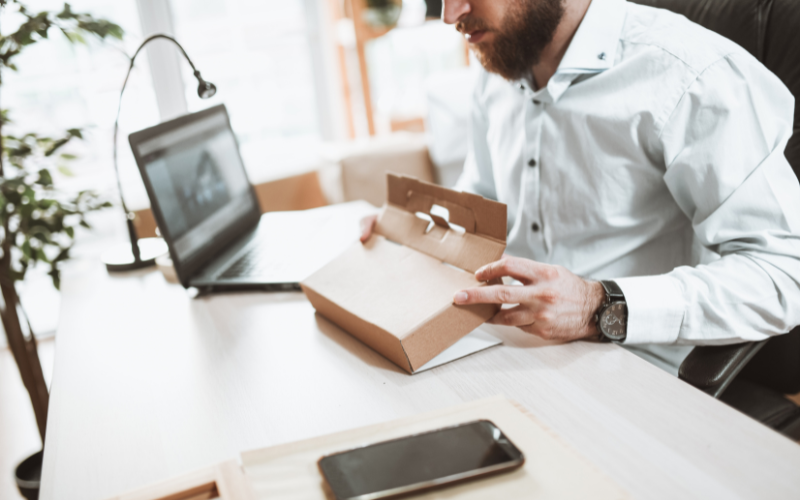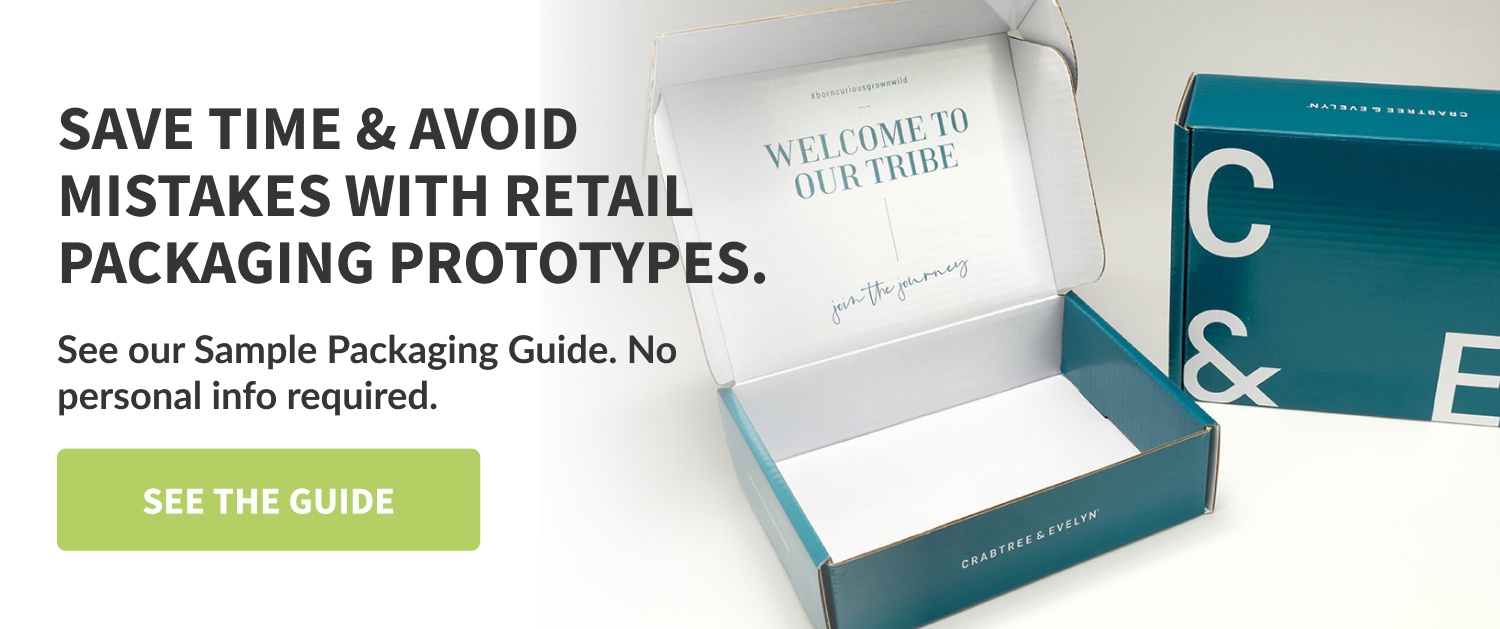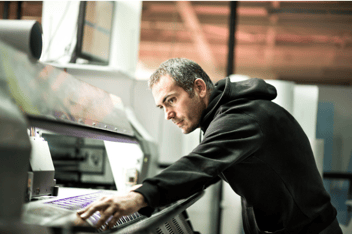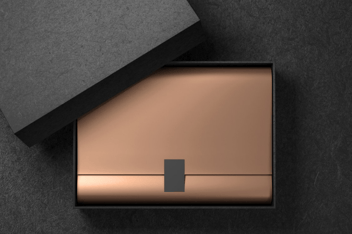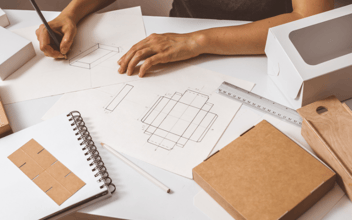Packaging Mockup vs. Packaging Sample: What's the Difference?
Packaging comprises a significant percentage of your product's total retail cost. Before making a big investment in product packaging, order a packaging mockup and make an educated choice based on what will work best for your product. A little research can save you money on every unit, which will add up at scale and boost profit margins down the line.
This blog will help you distinguish between packaging mockups and packaging samples. A packaging mockup is a rudimentary type of sample, usually formed by a graphic designer’s hand. Mockups can be extremely helpful in the early stages of planning.
A polished packaging sample may use a mockup for inspiration, but you’ll ultimately need a factory sample to see exactly what your packaging will look and feel like. Packaging samples boast a range of complexity, so it’s crucial to partner with a qualified packaging company to find which option is right for your brand.
What is a Packaging Mockup, Exactly?
Work out potential design problems with an affordable packaging mockup before you commit to an expensive order. Professional packaging companies can deliver a packaging mockup in just a few days at an extremely reasonable price.
Share your rudimentary packaging prototype with stakeholders so you can fine-tune the next sample. Show the mockup to your marketing team, engineers, design team, sales team, creative agencies, and anyone else who can provide helpful feedback.
Some companies make their own mockups in-house and bring the results to a packaging company so they can further refine the design. After a phone consultation, make sure everyone is on the same page about your vision so you can move forward with a fully rendered packaging sample.
Why You Might Need a Packaging Mockup
The primary reason for designing a packaging mockup is to deliver a basic proof of concept to any interested parties. Many packages, like POP displays and luxury rigid boxes, are designed on a computer before printing. A mockup is essentially a digital file turned into a physical prototype.
Looking at a physical package allows your team to review proportions, size, and design opportunities that wouldn’t be apparent with a digital file. You can make changes while the packaging is still in the design phase and ensure your samples match your overall branding.
Many brands also run focus groups with customers to A/B test different designs before investing in a full order. A packaging mockup offers an affordable and effective means to conduct research before your product packaging hits shelves.
Packaging mockups are a great visual aid to help pitch your product if you visit trade shows or industry events. With professional packaging, you will leave a positive impression, land deals, and start conversations.
What is a Packaging Sample?
While they come in many forms, packaging samples are generally more complex and fully rendered than a packaging mockup. Packaging samples include pre-production and factory samples, which are virtually identical to full production orders. Most companies require several months for factory samples. GPP’s in-house capabilities allow for a 2-3 week turnaround..
If you need something more sophisticated than a packaging mockup—but less involved than a pre-production sample—you should consider a white sample or proof sample. These will offer basic points of reference like size and proportions, but they don’t provide the crispness of a factory sample. Because they’re more basic, some suppliers can deliver white samples in a matter of days.
A digitally printed sample is just a white sample with printed artwork. You’ll get all the benefits of a white sample with additional insights regarding colors, design, and aesthetics. It’s probably worth getting a factory sample to confirm your packaging will meet your needs, but a digitally printed sample can serve as a good intermediary point of reference.
When to Use a Packaging Sample
If you are trialing a new product or pitching to a new retailer, it pays to test packaging before sending it into the market. Small differences in texture and aesthetic have monumental downstream effects on the customer experience, and holding a package in your hands before committing to a full order is invaluable to ensuring your packaging is perfect for your product.
Factory samples give you a full sense of your final product before you invest in new packaging. They also provide insights into packaging durability so you can guarantee your products will reach their destination safely.
You’ll need to make important decisions about logos, artwork, placement, and size. With an eye-catching design, your products will turn heads and boost sales. If you don’t need a fully rendered sample, consider a white sample or a digitally printed sample.
Basic sample packaging is great if you have a pitch meeting and need a quick turnaround. Many stores like Costco and Sam’s Club and online retailers like Amazon won’t even schedule a pitch meeting if you don’t have compliant packaging.
Partner with a qualified packaging company to help you navigate these challenging processes and deliver perfect product packaging. Variables like the supply chain, shelf space, and retailer requirements are constantly in flux, so it’s extremely helpful to have a professional in your corner.
Related Content: How to Plan a Product Packaging Sample
Take your packaging to the next level with a mockup or sample
Packaging mockups serve an important purpose when you are in the early design stages. But if you really want a helpful point of reference, invest in a full factory sample. White samples and digitally printed samples are good intermediary steps between mockups and factory samples.
If you want to highlight your products with stunning packaging, test several options before committing to a full order. Get helpful feedback from different stakeholders and find the perfect design.
No matter what you sell, professional packaging can help you land new clients, earn repeat customers, and create a cohesive brand identity.

